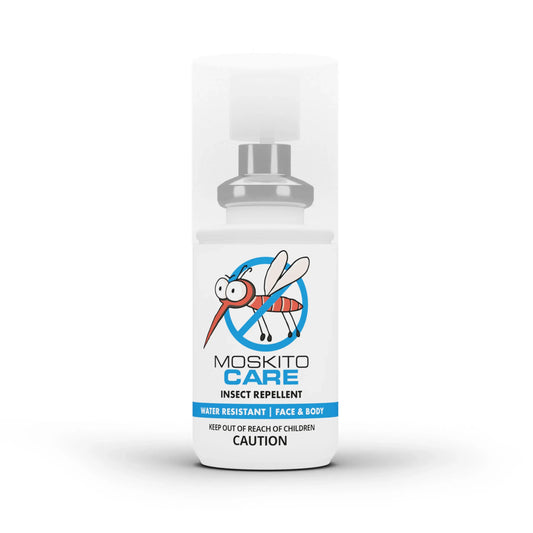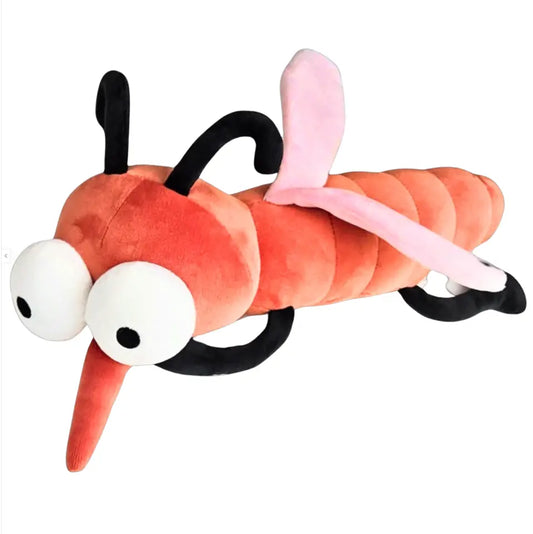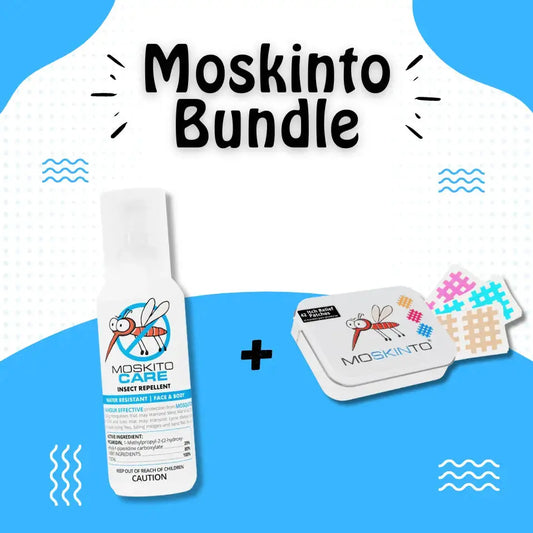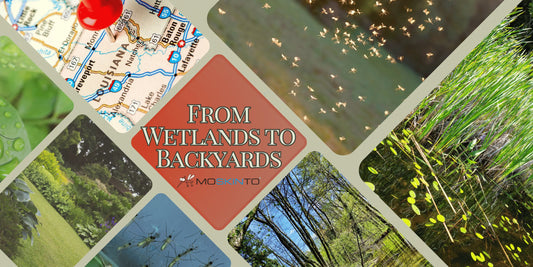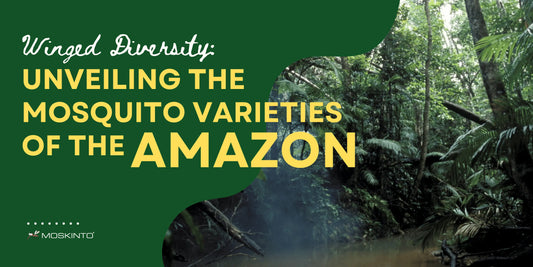Winged Diversity: Unveiling the Mosquito Varieties of the Amazon
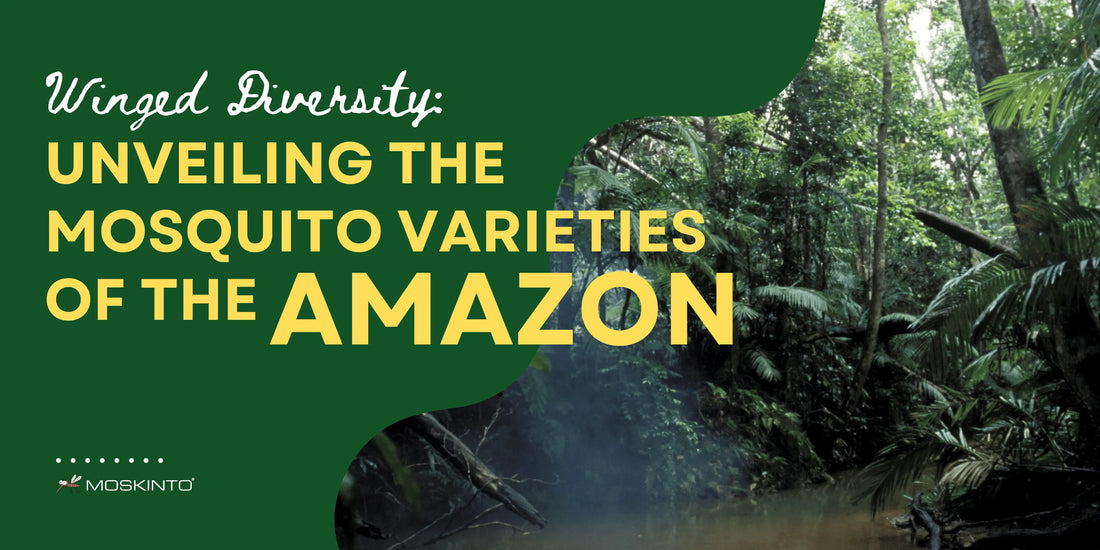
Explore the Amazon's mosquito diversity, vital to its ecosystem. Unlike typical backyard pests, these mosquitoes perform essential ecological roles. Delve into their unique species and learn about their broader significance beyond feeding habits.
A Disease Carrying Menace: Illnesses from Amazonian Mosquitoes
Mosquitoes in the Amazon rainforest are not just annoyances-they are vectors for some of the world's most dangerous diseases. While the lush canopy and diverse ecosystem captivate travelers and researchers alike, it's essential to acknowledge the health risks posed by these tiny insects.
Common Diseases Transmitted by Amazonian Mosquitoes
Perhaps the most notorious illness carried by mosquitoes in the Amazon is malaria. Malaria is caused by Plasmodium parasites that are transmitted through the bites of infected Anopheles mosquitoes. Symptoms range from fever and headache to severe complications such as organ failure.
- Dengue Fever: Dengue can lead to high fever, severe headache, and joint pain.
- Yellow Fever: This acute viral disease can result in jaundice, bleeding, and organ damage.
- Zika Virus: Often a mild infection, Zika virus can be a concern for pregnant women due to risks of birth defects.
- Chikungunya: This virus causes debilitating joint pain, fever, and rashes.
Health Ramifications for Indigenous People and Visitors
The health implications for both indigenous communities and visitors can be significant. Indigenous people are at risk due to constant exposure, often in areas with limited access to medical care. Visitors, lacking immunity and sometimes unaware of preventative measures, can also suffer severe infections.
Comparison with Mosquito-Borne Diseases Prevalent in the United States
Comparatively, mosquito-borne diseases in the United States are less frequent and typically less severe, with West Nile Virus being among the most common. This disparity emphasizes the critical importance of disease prevention for those traveling to areas with a high risk of mosquito-borne illnesses, such as the Amazon rainforest.
A Changing Climate: The Role of Global Warming on Amazonian Mosquitoes
As the planet faces ever-rising temperatures and climate change reshapes ecosystems, the Amazon rainforest is not exempt from these transformations. Significantly, global warming is altering the habitat and behavior of mosquitoes in the Amazon, with potential implications for both biodiversity and human health.
The Impact of Climate Change on Mosquito Populations in the Amazon
Climate change has a two-fold effect on mosquito populations in the Amazon. Warm temperatures can fast-track mosquito development from larvae to adulthood, thereby increasing their breeding rates and population size. Additionally, higher humidity creates more stagnant water bodies - perfect breeding grounds for these insects.
Potential Global Health and Environmental Consequences
The ramifications of an expanding mosquito habitat are significant. Increased mosquito populations can lead to a spike in mosquito-borne diseases, which could have a dramatic impact on global health. Meanwhile, changes in the behavior and distribution of these insects disrupt the delicate balance of the Amazonian ecosystem, potentially affecting predator-prey relationships and plant pollination patterns.
- Health Impact: A rise in diseases such as malaria, yellow fever, and Zika could impose a heavy burden on public health systems, particularly in regions least equipped to handle such outbreaks.
- Environmental Impact: Changing mosquito populations can influence the prevalence of certain plant species, thus altering the forest composition and impacting the entire food chain
Safeguarding Skin and Health: Preventing Mosquito Bites for Amazon Visitors
As a visitor, it's essential to protect yourself from mosquito bites, not only to steer clear of the nuisance they cause but also to prevent the spread of mosquito-borne diseases. Below are key measures every traveler should take to ensure a safe and healthy Amazon encounter.
Key Preventive Measures for Travelers
- Wear long-sleeved shirts and long pants to minimize skin exposure.
- Opt for light-colored clothing as mosquitoes are often attracted to dark colors.
- Use mosquito nets while sleeping, especially if lodging in open-air accommodations.
- Apply an effective mosquito repellent on exposed skin and clothing.
- Consider treating your clothes with permethrin for added protection.
- Ensure that areas where you stay are well-screened or air-conditioned to keep mosquitoes out.
Dos and Don'ts for a Healthy Trip to the Amazon Rainforest
Do stay vigilant during peak mosquito activity times, such as dawn and dusk. Do not assume you're safe from bites at any time; some species are active throughout the day. Do keep a lookout for still water, the perfect breeding ground for mosquitoes, and avoid these areas when possible. Do not apply sunscreen mixed with repellent as this can decrease the efficacy of the repellent-apply sunscreen first and repellent second.
Choosing the Right Repellent: Picaridin vs. DEET
Since the Amazon rainforest does have a lot of diversity when it comes to the creatures that call this place home it is very important to take all of them into consideration when picking the products you use. Even though DEET has been the most used chemical for popular repellents, it is not a sustainable option. Regarding DEET, it is less biodegradable, more toxic, more harmful to insects other than mosquitos, has more risks of bioaccumulation, and meets less environmental safety standards compared to Picaridin.
Embracing the Amazon's Delicate Balance: Our Role in a Biodiverse Ecosystem
The Amazon rainforest, teeming with life, is a true testament to the incredible complexity of our natural world. Among its vast biodiversity, the humble mosquito plays a pivotal, if often undervalued, role. Through our exploration of the Amazon's mosquitos, we've uncovered the multifaceted relationship these insects have with the environment and the people who come into contact with them.
As we grapple with diseases and the impacts of climate change, it's clear that our efforts must be rooted in respect for the ecological intricacies of regions like the Amazon. Continued research is vital not only for managing the immediate challenges posed by mosquitos but also for maintaining the equilibrium of an ecosystem that is a cornerstone of our planet's biodiversity.
The knowledge gained from studying Amazonian mosquitoes extends far beyond the rainforest; it informs us about the interconnectedness of life and the global web of biodiversity. With this understanding, we recognize the urgent need for balanced approaches to conservation-those that honor the lives of both native inhabitants and the myriads of unique species that call the Amazon home.
Protect Yourself and the Rainforest: Become Informed Before Your Amazon Adventure
If you are planning to venture into the Amazon, remember that the power of prevention is in your hands. Educate yourself on the best practices to avoid mosquito bites and the diseases they carry. Your awareness and preparedness are key to ensuring a safe, enjoyable, and respectful experience in one of our planet's most extraordinary natural settings.
- Invest time in learning about mosquito repellents and clothing that can protect you.
- Understand the importance of mosquito nets and their role in disease prevention.
- Acknowledge and respect the role that all creatures, including mosquitos, play in Amazonian ecology.
In South America, particularly in the Amazon rainforest, the presence of insects is abundant and diverse. An analysis of this ecosystem reveals the significant role mosquitoes play in its intricate web of life. As both predators and pollinators, mosquitoes contribute to the biodiversity and conservation efforts of the Amazon. Despite being considered nuisances, these tiny inhabitants are essential components of the region's delicate balance, highlighting the interconnectedness of all living organisms in this vast and vital ecosystem.



